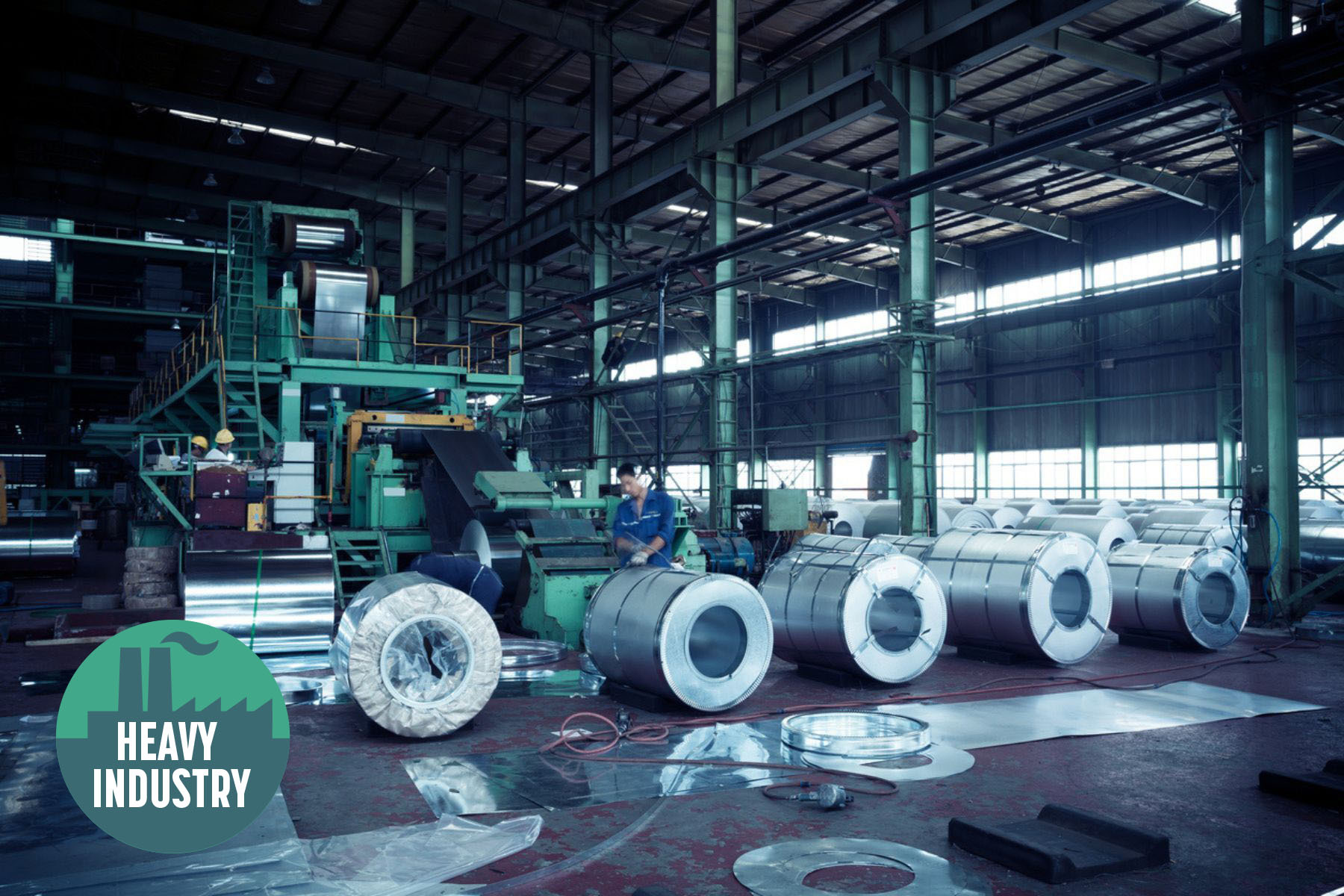This is the first in our new Insight series on heavy industry. In the coming months, 440 Megatonnes will release a series of Insights on how heavy industry can chart a course to net zero: where policy can help, and how Canada can turn industrial transformation into a competitive advantage.
The heavy industry sector is diverse, hard to decarbonize, and expected to be a key driver of a net-zero economy.
Heavy industry produces many of the essential materials needed for a net-zero economy, from the steel of a wind turbine to the minerals of an EV battery. But the processes used to make those products are often energy- and emissions-intensive.
Canada’s heavy industry sector is in fact several of the country’s largest industries grouped together, excluding oil and gas. It is usually divided into seven sub-sectors: mining; smelting and refining of non-ferrous metals (like nickel or aluminum); pulp and paper; iron and steel; cement; lime and gypsum; and chemicals and fertilizers. Altogether, they accounted for 11 per cent of Canada’s emissions in 2022, generated from a combination of fossil fuel use and chemical processes.
As Canada chases its emissions reduction goals, each one of these sub-sectors will need to chart its own pathway to net zero.
The challenge and the promise
According to the International Energy Agency, there are four reasons that heavy industry may be slow to decarbonize. First, it will need to rely more heavily on nascent technologies like carbon capture or hydrogen. Second, in the short term, decarbonized production processes will be more expensive. Third, many industrial products face international competition, so higher costs are harder to pass along to customers. Fourth, because industrial facilities are long-lived and capital-intensive, they face a higher risk of locking-in emissions.
These challenges have shaped Canada’s approach to industrial climate policies. For instance, carbon pricing for large emitters is designed to shield industries from high-carbon, low-cost competitors while maintaining an incentive to cut emissions.
If Canada’s heavy industry can be successfully decarbonized, it will generate dividends for the country’s competitiveness as well as the world’s climate. Low-carbon critical minerals, aluminum, and steel are just a few of the products that are in growing demand as the world decarbonizes. And other countries are introducing policies that will privilege the lowest-carbon producers. Canadian industries that can cut their emissions will be better placed to seize those opportunities.
Those opportunities are also critically important for the nearly 300,000 people who are employed in Canada’s heavy industries, and for the regions where industrial facilities are concentrated, whether it’s mining in the North, aluminum in Quebec, or chemicals and fertilizers on the Prairies.
Various—sometimes competing—trends shape emissions from heavy industry
Every sector of Canada’s economy contains enormous diversity. Within heavy industry, multiple and sometimes contradictory trends are influencing emissions.
The overall trend in the sector looks positive. Between 2005 and 2022, emissions fell by about 13 megatonnes (Mt), or 15 per cent. Six of seven sub-sectors also saw declining emissions in that time (Figure 1).
But there are other trends that complicate this positive first impression. First, in the mining sector—one of the largest sub-sectors, and one with strong potential for future economic growth—emissions are growing. They have risen 3 Mt since 2005.
Second, in some cases, emissions are lower because sub-sectors are shrinking, not because they are more efficient.
Emissions are the product of three main drivers: economic activity; energy intensity; and emissions intensity.
Some sub-sectors in heavy industry have lower emissions because they have reduced the energy or emissions intensity of their operations. The chemicals and fertilizers sub-sector is one such example. But in the pulp and paper sector, for example, lower emissions are strongly correlated with reduced output (Figure 2).
Canada’s official emissions reporting conveys the same message. The latest National Inventory Report suggests that the strongest trend influencing emissions from heavy industry is “the continued evolution of Canadian production towards other sectors and services.”
Figure 2 offers one way to compare these trends. It illustrates how the GDP, energy intensity, and emissions intensity of each sub-sector have changed since 2005. Future insights will explore these drivers in greater detail.
Every industry has its own pathway to 2030
Canada’s path to its climate goals is really the sum of many individual paths followed by sectors across the country. While heavy industries may share some common features and challenges, each sub-sector has different drivers of emissions, and will need its own combination of solutions to reach net zero.
In the coming months, 440 Megatonnes will explore those drivers and solutions in greater detail. While heavy industry may not be Canada’s largest-emitting sector, it is one of the largest challenges. Its emissions are hard to reduce, and though decarbonization is in its long-term interests, it will face costs in the short term. Policymakers can play a crucial role in helping to steer the sector toward long-term competitiveness.
Ross Linden-Fraser is a Senior Research Associate at the Canadian Climate Institute.
